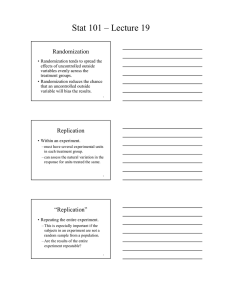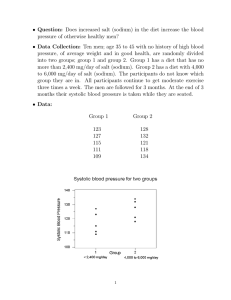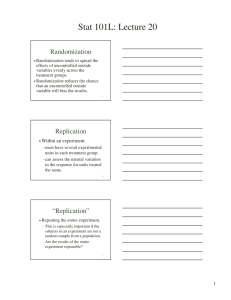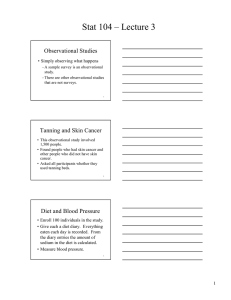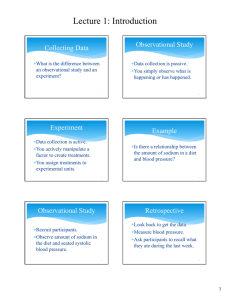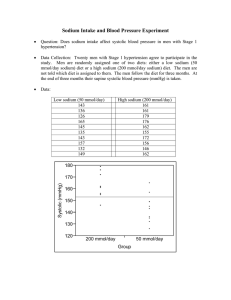Observational Studies Simply observing what happens –
advertisement
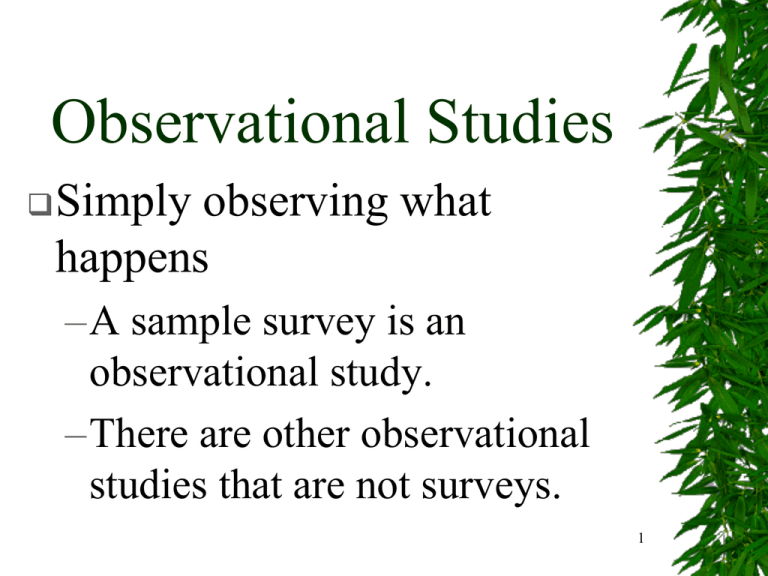
Observational Studies Simply observing what happens –A sample survey is an observational study. –There are other observational studies that are not surveys. 1 Tanning and Skin Cancer The observational study involved 1,500 people. Checked medical records to see if a person had experienced skin cancer or had never had skin cancer. Asked all participants whether they had used tanning beds. 2 Sodium and Blood Pressure Enroll 100 individuals in the study. Give them diet diaries where they record everything they eat each day for a month. From this the amount of sodium in the diet is found. Measure their blood pressure. 3 Differences – look at past records and historical data. Retrospective – Tanning and Skin Cancer – identify subjects and collect data as events unfold. Prospective – Sodium and Blood Pressure 4 Experiments Explanatory variable – Factor. Treatments. – Participants – Experimental Units. Response variable. Subjects 5 Experiments The experimenter must actively and deliberately manipulate the factor(s) to establish the method of treatment. Experimental units are assigned at random to the treatments. 6 Sodium and Blood Pressure 20 subjects. Factor – amount of dietary sodium. Treatments: low sodium diet and high sodium diet. 10 subjects randomly assigned to each treatment. Response – systolic blood pressure. 7 Experimental Principles Control Randomize Replicate – within an experiment. – repeating the entire experiment. Block 8 Control Control outside variables that may affect the response. – Have subjects of the same age, gender, general health, ethnic group. – By controlling outside variables you prevent those variables from causing variation in the response. 9 Randomization Randomization tends to spread the effects of uncontrolled outside variables evenly across the treatment groups. Randomization reduces the chance that an uncontrolled outside variable will bias the results. 10 Replication Within an experiment. –must have several experimental units in each treatment group. –can assess the natural variation in the response for units treated the same. 11 “Replication” Repeating the entire experiment. – This is especially important if the subjects in an experiment are not a random sample from a population. – Are the results of the entire experiment repeatable? 12 Diagram Group 1 several subjects Subjects Treatment 1 random allocation Group 2 several subjects Compare Response Treatment 2 13 Block There may be attributes of the experimental units that can’t be controlled but may affect the response. Group similar experimental units into blocks and then randomize the assignment of treatments within each block. 14 Blocking Math ability –very high, high, average, low, and very low. –assign, at random, students from each math ability group to each treatment. 15 More Ideas Control “treatment”. Blinding. –Single blind and double blind. Placebos. 16 Multiple Factors Factors – can use calculator (yes, no) – can use a formula sheet (yes, no). Treatments – calculator and formulas, calculator but no formulas, formulas but no calculator, no calculator and no formulas. 17 Confounding Sodium and blood pressure. – All subjects on the low sodium diet had their blood pressure measured by a registered nurse using a standard manual cuff and stethoscope. – All subjects on the high sodium diet had their blood pressure measured using an automated cuff and digital readout. 18
